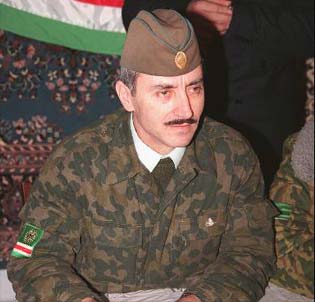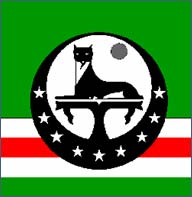In the late 1980s, as national rights movements slowly began to take shape under the policy of glasnost, a campaign for Chechen self-determination emerged. In November 23, 1990, with separatist fervor at fever pitch throughout the Soviet Union, a Chechen National Congress convened and called for parliamentary and presidential elections. At the helm of the separatist movement stood Soviet Air Force General Jokhar Dudayev.
Using army troops, Dudayev oversaw the seizure of the KGB headquarters and radio and television installations in Grozny in October 1991. Faced with a growing crisis, Moscow offered elections. When they were held, Dudayev was elected as president of Chechnya and promptly declared Chechnya’s independence from the Soviet Union.
As Russian President Boris Yeltsin struggled to build a new regime in Moscow, tensions with the tiny breakaway republic continued to mount. Chechnya did not participate in the December 1993 elections for a new Russian parliament. A Moscow-backed, anti-Dudayev coup broke out a year later in November against the newly named “Chechen Republic of Ichkeria,” but ultimately failed. Among the Chechen gains: the capture of 70 Russian soldiers who had been recruited by Russia’s Federal Counter-Intelligence Service to lead the attack. It was time for Moscow to act.
Did You Know?
The Chechen flag: The color green and the wolf represent Islam and the Chechen people. The nine stars represent the tukums, or tribes of Chechnya. The tukums originate from nine brothers, who, according to legend, are the ancestors of all Chechens.
- Previous: 1944: Deportation
- Next: 1994-1996: War with Russia I




